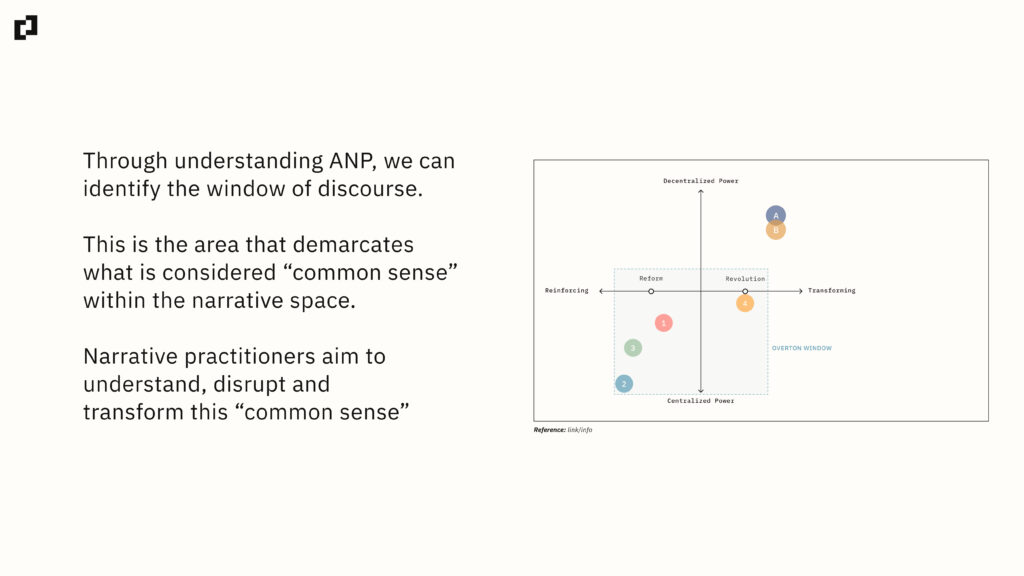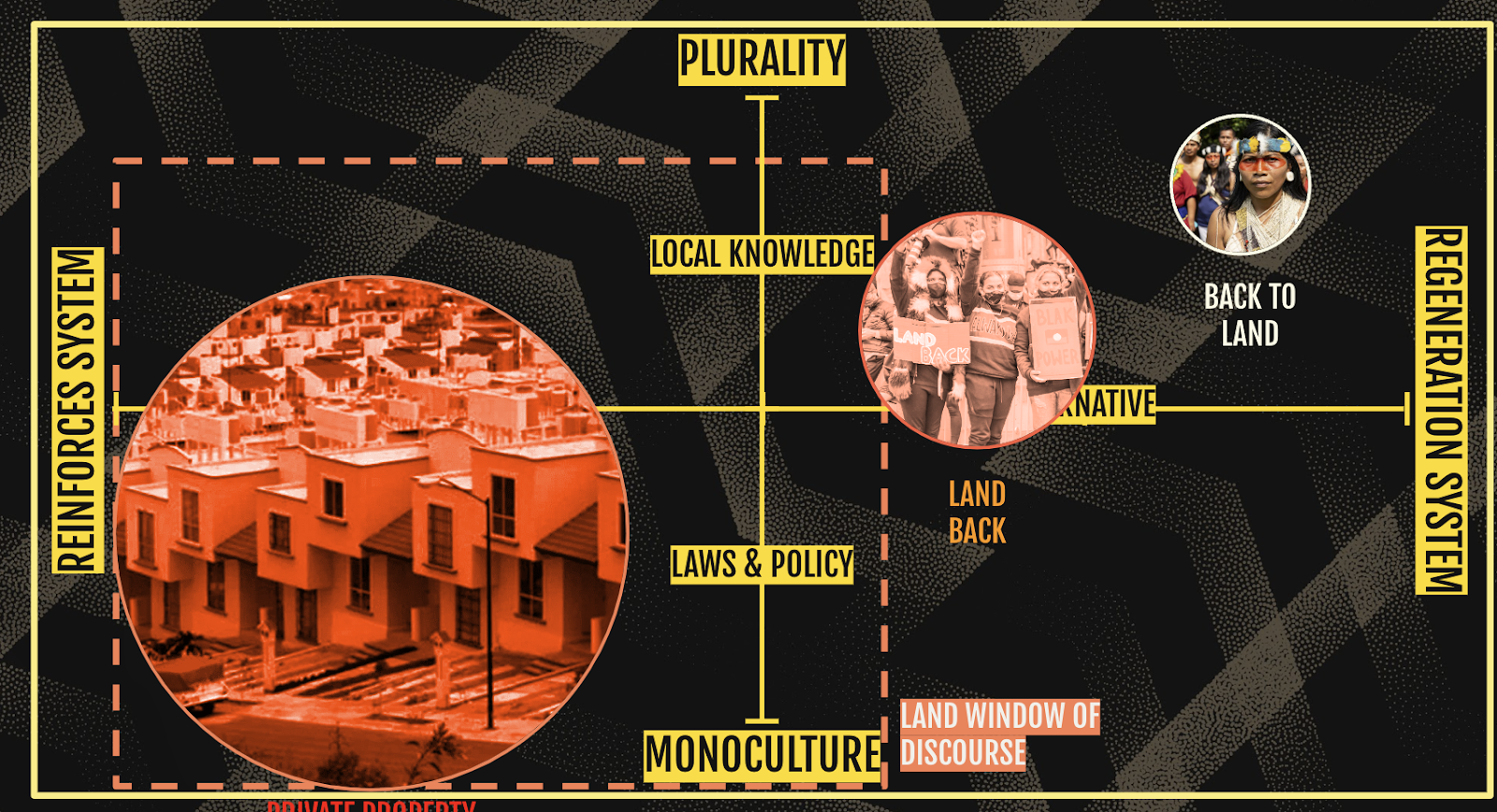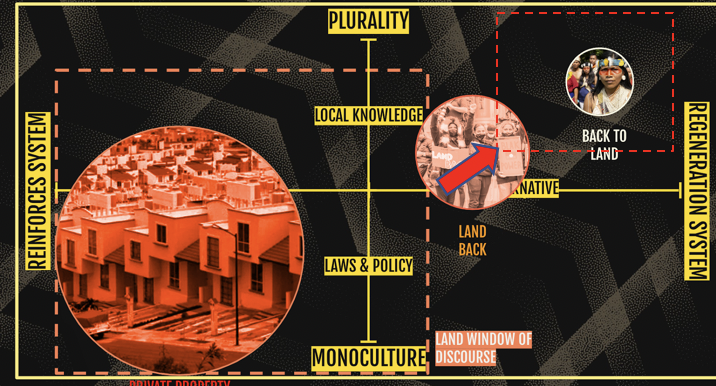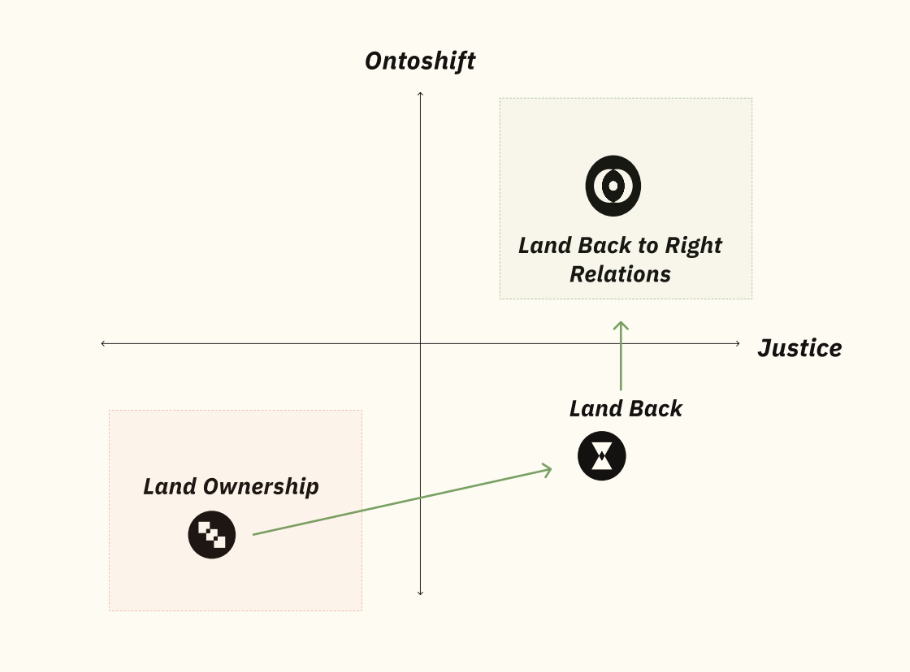The Window of Discourse
Now we have mapped our narrative communities using our Attention, Network, Power, and Language analysis, we can identify the Window of Discourse.
The Window of Discourse describes the range of ideas within the narrative space that the public is willing to accept: what sits in the window is what is considered “common sense”
As narrative practitioners, we aim to understand, disrupt and transform this common sense.
In fact, the ultimate long term aim of Narrative-led Systems Change is to strategically push the far edge of what is considered acceptable – towards the top right quadrant – where narratives achieve both “Justice plus Ontological Shift”.

After identifying the Window of Discourse, you must now decide where you want to shift it for this narrative intervention. This will become the basis of the REFRAME step where we will dive into narrative strategy.
Identifying the Window of Discourse: It sat in the bottom-left quadrant—where both justice and ontology are at their lowest levels. Here, the dominant narrative of “private property” is considered public and political common sense. Land is a commodity to be owned, sold and extracted rather than a relational entity. This reinforces systemic injustices and maintains a monocultural worldview.

Shifting the Window of Discourse: We want to make common sense the narrative land is alive, relational, and kin.

The narrative mapping below illustrates the desired narrative change in relation to the “justice plus onto-shift” approach to systems change that we outlined in the Introduction: from the mainstream, hegemonic narrative of private land ownership (injustice) progressing through “land back” narratives (justice), and culminating in “land back to right relations” (ontological shift).
